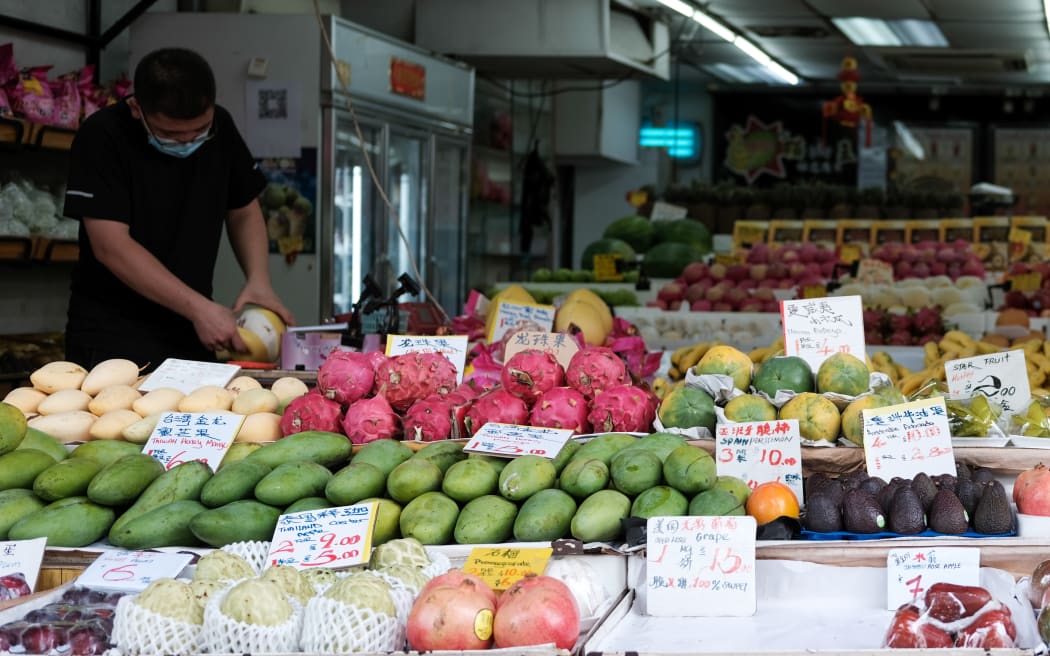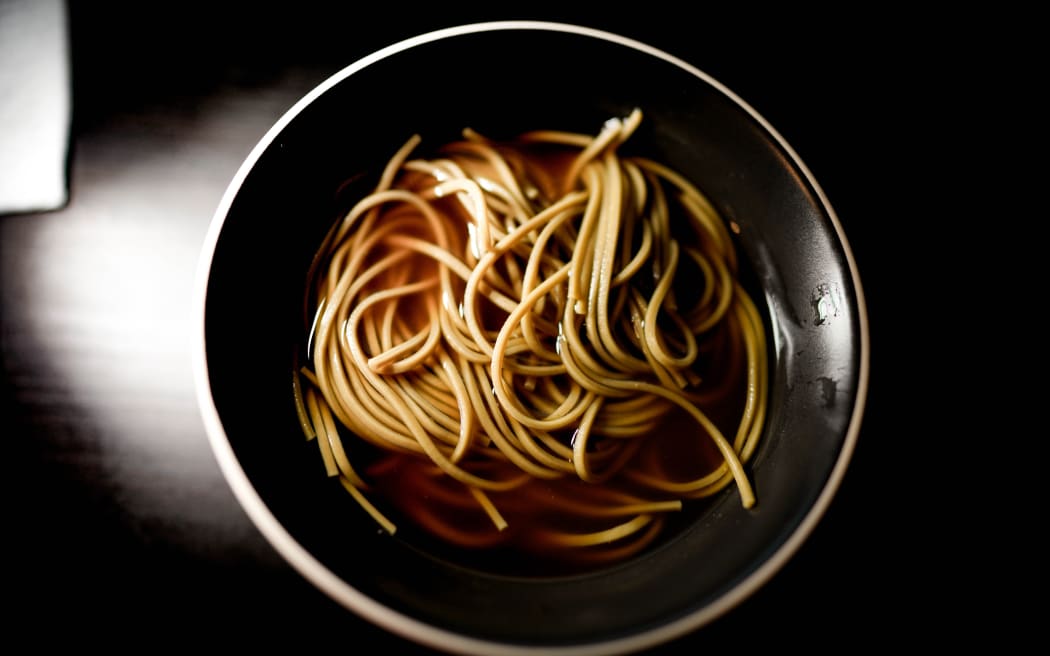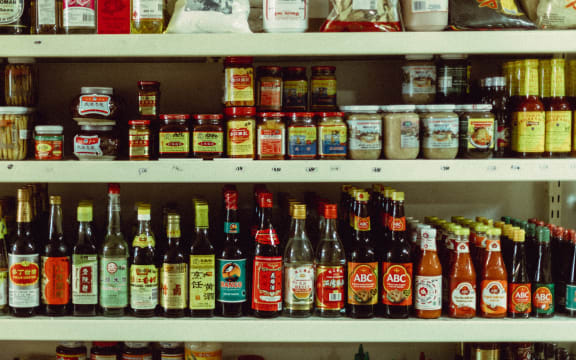
Photo: Galen Crout for Unsplash
Want seasonal, locally grown, well-priced fruit and vegetables, alongside a broad selection of everyday and exotic ingredients? New Zealand’s Asian supermarkets are the shop for you, says MasterChef 2022 winner Sam Low.
“There's not a lot of places where you could get such an inclusive kind of environment where, regardless of class, and your background, you'd be able to find something for you in Asian supermarkets usually,” Low says.
Low, a coffee consultant who sprang to fame after winning Masterchef in 2022, told Jesse Mulligan that he was “passionate” about Asian supermarkets.
“I’ve moved around a lot, but Asian grocers have always been there for me.”

MasterChef NZ 2022 Winner Sam Low Photo: Sam Low
Low’s parents are from southern China and he was born in Fiji. He moved to New Zealand in 2000, then spent most of his 20s in Vancouver and Melbourne.
“I’ve been around food for the longest time, ever since I was a kid in my parents’ noodle factory.”
Low says New Zealand’s Asian supermarkets have something for all tastes and budgets.
“You could get really expensive things, but you could get really cheap things as well.
“A lot of the Asian greens that you see are from really, really close local, smallholding farms or gardens essentially. But on top of that, you will also get things that are highly wanted around the world, so internationally shipped, premium-grade fruits and things like that. You would get really rare mangoes or mangosteen and lychees that would cost $40-plus a kilo, but then you'd also get really in-season fruit and vegetables as well.”
Larger East Asian supermarkets often have butchery sections where shoppers can find or request cuts that are hard to find elsewhere, he says.
“You could always request random things like such as offal… you can ask for pig intestines or kidney or liver, and you can ask if it’s fresh that day as well. You can get things like chicken skin, which I find that other supermarkets tend to throw away, but I think it's the best part of the chicken.”
Asian supermarkets also are a rich source of bargains if you know what you’re looking for, he says.
“You get oyster mushrooms that are fresh and sold by the kilo, which is quite rare in a Western supermarket, but also alternatively, you can get dried versions of those things as well.”
And if you don’t know what you’re looking for? Low advises dipping a toe in gradually.
“One thing that I recommend everyone to do is try one new ingredient every week. When you do that, then that you're just building a pantry. It doesn't have to be fresh produce, it could be a new brand of soy sauce or it can be a new brand of black vinegar, so by doing that you're just expanding your palette and knowledge. You will find that some things are not for you and they’ll end up being the back of the pantry, but that's really low risk.”
He joined Jesse Mulligan to answer some listeners’ questions on Afternoons this week.

Photo: Fidel Fernando for Unsplash
What are the best pot noodles to get?
Low says Korean brand Nong Shin “the red and black packet ones” are his instant noodles of choice.
“They’re a decent serving size as well, so you don’t need two packets. One of those, with your favorite seasonal veggies to bulk it up, and maybe a cracked egg in there - honestly, that was like my high school [meal of choice]."
What do I do with uemboshi vinegar?
“I would use the vinegar to make cocktails. Or you could use it in salad dressings, it’s like adding a fruit vinegar. You would add salt, pepper soy sauce or citrus, cracked black pepper and a bit of sugar and then that makes a really lovely dressing.”
What’s up with MSG?
“MSG is naturally found in so many products; soy sauce, tomatoes, aged meats, cheeses. When used in excess it will make you feel bad, but that’s the same with salt and sugar and anything really. It does enhance your food. It is known as the fifth taste, which is savoury (also known as umami). If you add umami in the right context and the right balance, it really takes the food to another level.”
What's your favourite thing to do with tofu?
“This constantly changes. Right now, it is medium firm tofu. You drain all the liquid out that it sits in, and then you marinate it in seasoned soy sauce, then you let it sit in the fridge overnight and the next day you just pan fry it and it's so good over rice. You pan fry it until it's like brown on all sides. And then you throw in the rest of the marinade and then you let it like thicken up into like its own sauce. So it's almost like teriyaki but it's not.”
Do you need a wok to cook Chinese food?
“I’m in a rental right now. I'm just keeping it real, I don't have a wok burner. I just use a quite a heavy based large fry pan, with a squeezy bottle filled with neutral oil.”

Photo: Lachlan Rennie for Unsplash
How do you use oyster sauce? And black bean sauce or hoisin sauce?
“Oyster sauce is a very generalised term for oyster extract thickened with soy sauce and cornstarch or stabiliser. It’s a really savory, umami, seafood, thickened sauce and it's usually used in braises, in like casseroles and stir fries or as a finishing sauce. At yum char you’d always get the greens being pushed around by the aunties and its always topped off with oyster sauce. You could use on any application to add depth of flavor, but also a slight sweet seafood flavor as well.
“For black bean sauce, it’s the same without oysters. They use fermented black beans, which is from soybeans, and again, it adds savoriness. It’s a great vegan option.
“Hoisin sauce is a combination of so many ingredients. It is a rich, savory, slightly nutty kind of sauce. It's really savory. And I would say use that one quite sparingly as well, but that one's great. So if you have Peking duck, that's usually what they'll have on it. “
What are the best types of Chinese rice wine to use?
“Shao Xing rice wine, the red bottle that's usually $2-$3, is the most common, and I would say that was very good for its price point. It's great for marination and finishing of stir-fries. The 10-year-aged rice wines, those are really good for really delicate braises, so if you're making drunken chicken or healing broths and things like that. The more delicate the cooking, the more expensive and more complex the rice wine you should choose.”

